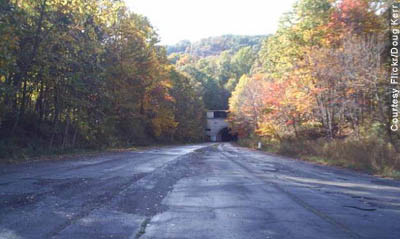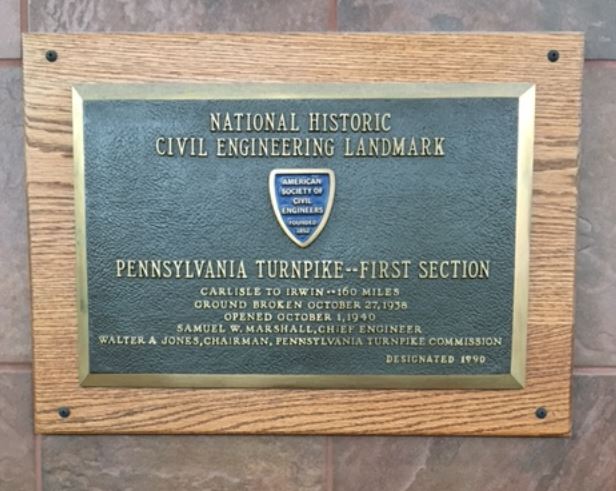Pennsylvania Turnpike (Old Section)

When completed, the original section of the Pennsylvania Turnpike was the greatest single highway project in the history of the United States. It was the prototype of the modern American high-speed, limited access superhighway that became a world standard for long distance highway travel.
"There will be not a single left turn in the entire distance, nor a single grade crossing, and modern trucks will be able to travel the full length of the Pennsylvania Turnpike without having to shift gears." — Herschel Allen Civil Engineering, February 1940
The Pennsylvania Turnpike was the first American paved highway of the automobile era in which tolls alone were expected to pay all project costs. The 160-mile roadway, which cut an east-west path from Pittsburgh to the state capital of Harrisburg, was considered a revolutionary example of transportation system design and served as a model for the Interstate Highway System.
Motorists had never before seen a road without traffic lights, intersections, and pedestrian or railroad crossings. It was a novel concept that brought 27,000 vehicles on the new roadway the first Sunday it was opened.
For the project to be constructed in a mere 20 months, 1,100 engineers worked on the design, producing many innovations. For example, when possible, the turnpike route was laid out on southern exposures, allowing the sun to melt the ice and snow on the roads. In addition to the roadway, the design involved over 300 bridges and culverts, nine interchanges, 10 service plazas, and 11 tollbooths.

Resources
- Dan Cupper, "The Road to the Future," American Heritage 41 (May/June 1990): 102-111.
- Edward J. Trojan, "Pennsylvania Turnpike Ushered in New Generationof Super Highways," Public Works 125 (January 1994): 48-49.

